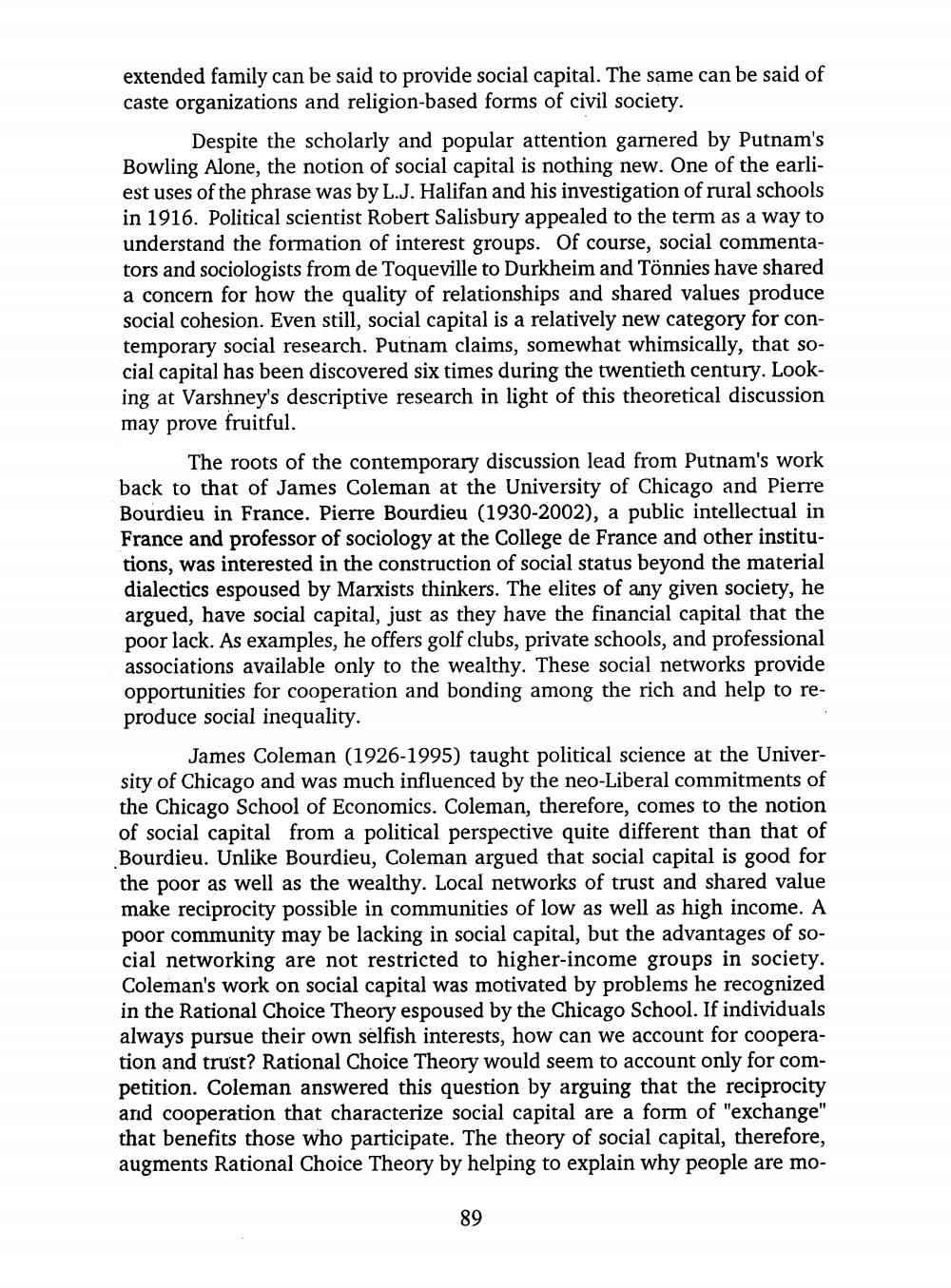________________
extended family can be said to provide social capital. The same can be said of caste organizations and religion-based forms of civil society.
Despite the scholarly and popular attention garnered by Putnam's Bowling Alone, the notion of social capital is nothing new. One of the earliest uses of the phrase was by L.J. Halifan and his investigation of rural schools in 1916. Political scientist Robert Salisbury appealed to the term as a way to understand the formation of interest groups. Of course, social commentators and sociologists from de Toqueville to Durkheim and Tönnies have shared a concern for how the quality of relationships and shared values produce social cohesion. Even still, social capital is a relatively new category for contemporary social research. Putnam claims, somewhat whimsically, that social capital has been discovered six times during the twentieth century. Looking at Varshney's descriptive research in light of this theoretical discussion may prove fruitful.
The roots of the contemporary discussion lead from Putnam's work back to that of James Coleman at the University of Chicago and Pierre Bourdieu in France. Pierre Bourdieu (1930-2002), a public intellectual in France and professor of sociology at the College de France and other institutions, was interested in the construction of social status beyond the material dialectics espoused by Marxists thinkers. The elites of any given society, he argued, have social capital, just as they have the financial capital that the poor lack. As examples, he offers golf clubs, private schools, and professional associations available only to the wealthy. These social networks provide opportunities for cooperation and bonding among the rich and help to reproduce social inequality.
James Coleman (1926-1995) taught political science at the University of Chicago and was much influenced by the neo-Liberal commitments of the Chicago School of Economics. Coleman, therefore, comes to the notion of social capital from a political perspective quite different than that of Bourdieu. Unlike Bourdieu, Coleman argued that social capital is good for the poor as well as the wealthy. Local networks of trust and shared value make reciprocity possible in communities of low as well as high income. A poor community may be lacking in social capital, but the advantages of social networking are not restricted to higher-income groups in society. Coleman's work on social capital was motivated by problems he recognized in the Rational Choice Theory espoused by the Chicago School. If individuals always pursue their own selfish interests, how can we account for cooperation and trust? Rational Choice Theory would seem to account only for competition. Coleman answered this question by arguing that the reciprocity and cooperation that characterize social capital are a form of "exchange" that benefits those who participate. The theory of social capital, therefore, augments Rational Choice Theory by helping to explain why people are mo
89




